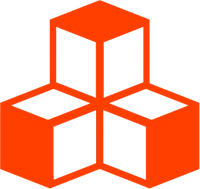@threlte/extras
useCursor
A hook that sets the css cursor property according to the hover state of a mesh, so that you can give the user visual feedback.
If a context is present, the cursor property will be set on the DOM element of the renderer, otherwise it will be set on the body element.
<script lang="ts">
import { Canvas } from '@threlte/core'
import Scene from './Scene.svelte'
</script>
<div>
<Canvas>
<Scene />
</Canvas>
</div>
<style>
div {
height: 100%;
}
</style><script lang="ts">
import { T, useThrelte } from '@threlte/core'
import { interactivity, Text, useCursor } from '@threlte/extras'
import { DEG2RAD } from 'three/src/math/MathUtils.js'
const { hovering, onPointerEnter, onPointerLeave } = useCursor()
$: color = $hovering ? '#dddddd' : '#FE3D00'
const { size } = useThrelte()
let zoom = $size.width / 7
$: zoom = $size.width / 7
interactivity()
</script>
<T.OrthographicCamera
{zoom}
position={[5, 5, 5]}
oncreate={(ref) => {
ref.lookAt(0, 0, 0)
}}
makeDefault
/>
<T.DirectionalLight
position.y={10}
position.x={5}
/>
<T.AmbientLight intensity={0.2} />
<Text
text="HOVER"
interactive
onpointerenter={onPointerEnter}
onpointerleave={onPointerLeave}
fontSize={0.5}
anchorY="100%"
anchorX="50%"
rotation.y={90 * DEG2RAD}
position.y={1}
position.x={-1}
{color}
/>
<T.Mesh
onpointerenter={onPointerEnter}
onpointerleave={onPointerLeave}
>
<T.MeshStandardMaterial {color} />
<T.BoxGeometry args={[2, 2, 2]} />
</T.Mesh>Examples
Simple Usage
Provide arguments to determine the cursor style. The defaults are'pointer' for onPointerOver and 'auto' for onPointerOut. useCursor returns event handlers that you can use to set the hovering state:
<script lang="ts">
import { T } from '@threlte/core'
import { useCursor } from '@threlte/extras'
import { BoxGeometry, MeshBasicMaterial } from 'three'
// Set the cursor to 'grab' if the pointer is
// hovering over the mesh and to 'crosshair'
// if the pointer is outside the mesh
const { onPointerEnter, onPointerLeave } = useCursor('grab', 'crosshair')
</script>
<T.Mesh
onpointerenter={onPointerEnter}
geometry={new BoxGeometry()}
material={new MeshBasicMaterial()}
/>Renaming Event Handlers
You can rename the event handlers to resolve naming conflicts. Additionally Svelte allows binding multiple event handlers to the same event:
<script lang="ts">
import { T } from '@threlte/core'
import { useCursor } from '@threlte/extras'
import { BoxGeometry, MeshBasicMaterial } from 'three'
const { onPointerEnter: cursorEnter, onPointerLeave: cursorLeave } = useCursor()
const onPointerEnter = () => {
console.log('Pointer entered!')
}
const onPointerLeave = () => {
console.log('Pointer left!')
}
</script>
<T.Mesh
onpointerenter={cursorEnter}
onpointerenter={onPointerEnter}
geometry={new BoxGeometry()}
material={new MeshBasicMaterial()}
/>Store Usage
If you want to implement custom logic, you can use the returned svelte store to set the hovering state:
<script lang="ts">
import { T } from '@threlte/core'
import { useCursor } from '@threlte/extras'
import { BoxGeometry, MeshBasicMaterial } from 'three'
const { hovering } = useCursor()
</script>
<T.Mesh
onpointerenter={() => ($hovering = true)}
onpointerleave={() => ($hovering = false)}
geometry={new BoxGeometry()}
material={new MeshBasicMaterial()}
/>Change the Cursor Style
Provide svelte stores to change the cursor style also while hovering:
<script lang="ts">
import { T } from '@threlte/core'
import { useCursor } from '@threlte/extras'
import { BoxGeometry, MeshBasicMaterial } from 'three'
import { writable } from 'svelte/store'
const onPointerOverCursor = writable('grab')
const { onPointerEnter, onPointerLeave } = useCursor(onPointerOverCursor)
// somewhere in your application …
onPointerOverCursor.set('grabbing')
</script>
<T.Mesh
onpointerenter={onPointerEnter}
geometry={new BoxGeometry()}
material={new MeshBasicMaterial()}
/>